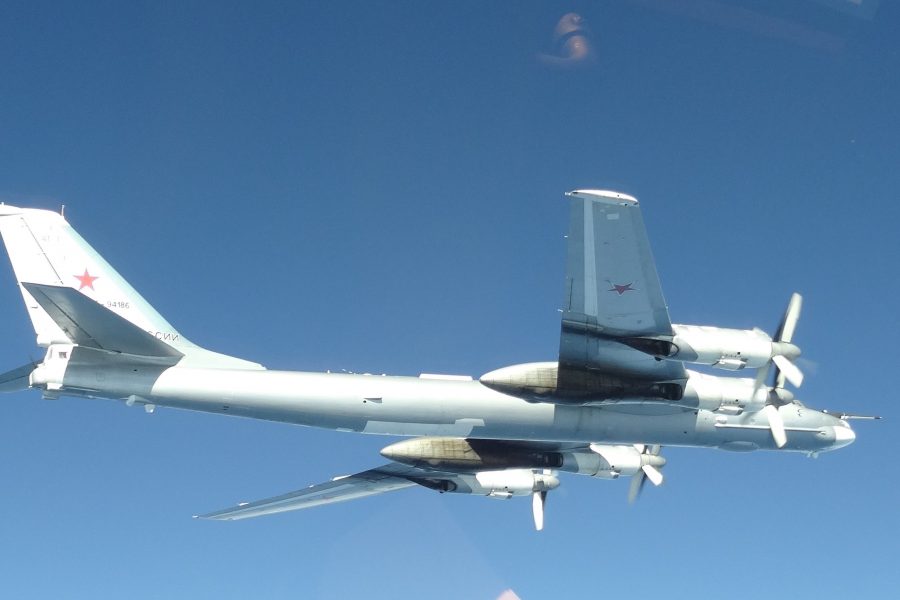For the second time in a week, F-22 Raptors, supported by KC-135 Stratotankers and an E-3 Airborne Warning and Control System, intercepted two formations of Russian bombers off the coast of Alaska, North American Aerospace Defense Command announced.
Two Tu-95 Bear bombers, accompanied by Su-35 fighters and supported by an A-50 airborne early warning and control aircraft, made up the first formation. The second included two more Tu-95s supported by an A-50. The Russian aircraft stayed in international airspace during the June 16 flights, but came within 32 nautical miles of Alaskan shores, NORAD said.
“For the eighth time this year, Russian military aircraft have penetrated our Canadian or Alaskan Air Defense Identification Zones, and each and every time NORAD forces were ready to meet this challenge,” NORAD Commander USAF Gen. Terrence O’Shaughnessy said in a release.

F-22s supported by KC-135s and an E-3 AWACS also intercepted two other Russian bomber formations off Alaska’s coast on June 10.
In response, the U.S. on June 14 sent three B-52Hs from Barksdale Air Force Base, La., to Eielson Air Force Base, Alaska, for a Bomber Task Force deployment. The U.S. also sent two B-52s from Minot Air Force Base, N.D., to Europe to participate in the NATO-led BALTOPs exercise. Russian Su-27s intercepted those bombers over the Baltic Sea.
O’Shaughnessy recently told reporters that Russia is testing the U.S. military to see if the new coronavirus has created any weaknesses. But the U.S. remains ready, he said, “24 hours a day, seven days a week, 365 days a year.”
In February, O’Shaughnessy told the Senate Armed Services Committee that adversaries, such as Russia and China, want to avoid direct military conflict, but he cautioned “their growing assertiveness increases the risk of miscalculation and gives rise to a threat environment more complex and dynamic than we have seen since the end of the Cold War.”




